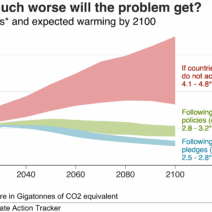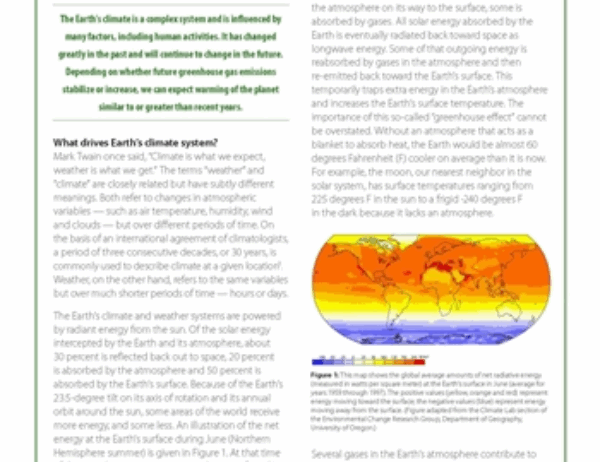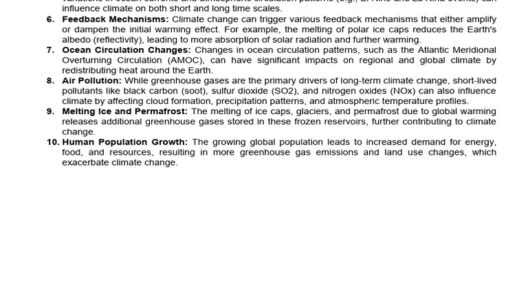To understand the term “climate,” one must grasp its fundamental definitions and the nuances that differentiate it from related concepts such as “weather.” While weather refers to short-term atmospheric conditions, climate is the aggregate of these conditions over prolonged periods—often 30 years or more—across specific regions. This distinction is crucial, as failing to recognize it can lead to misunderstandings regarding climate change and the long-term shifts in temperature and weather patterns.
In essence, climate embodies the statistical averages and variations in temperature, precipitation, humidity, wind, and other atmospheric elements throughout various geographical locales. These factors coalesce to form what we recognize as different climate zones, shaping ecosystems and influencing human activities.
The examination of climate touches on a tapestry of interacting elements that reveal the complexity of our Earth’s weather systems. Let us delve deeper into these multifaceted aspects.
Types of Climate: Exploring the Spectrum
The global climate can be classified into distinct categories, each characterized by specific temperature and precipitation patterns. Understanding these zones reinforces the significance of biodiversity and human adaptation strategies. Here, we’ll explore three primary climate categories:
1. Tropical Climates: The Lush Heat
Tropical climates are primarily situated along the equator and are known for their consistently warm temperatures year-round, with minimal temperature variation. These regions experience abundant rainfall, making them vibrant with diverse ecosystems. Rainforests thrive, nurturing an array of flora and fauna, which rely on regular precipitation. This climate type supports agriculture, especially tropical crops like coffee, bananas, and cocoa.
2. Arid and Semiarid Climates: The Challenge of Scarcity
In stark contrast to the lush tropical zones, arid and semiarid climates are characterized by minimal precipitation and significant temperature fluctuations between day and night. These regions, often known as deserts, appear barren; yet they harbor unique adaptations among flora and fauna. The survival strategies of desert plants, like cacti, and animals, such as reptiles, necessitate resilience in the face of harsh conditions. Understanding these environments is vital for developing conservation strategies amidst climate change.
3. Temperate Climates: The Balance
Temperate climates exhibit moderate variations in temperature and are typically marked by four distinct seasons: spring, summer, autumn, and winter. These regions reflect a balance between warmth and coolness, with sufficient rainfall to support diverse ecosystems. The temperate zones are often fertile and support a variety of agricultural practices, providing a significant portion of the world’s food supply.
The Dynamics of Climate: Influences and Interactions
Understanding climate involves examining the myriad factors influencing it, including geographical, meteorological, and anthropogenic elements. Grasping these dynamics offers insight into both historical patterns and future scenarios.
Natural Influences on Climate
Geographic features, such as mountains and bodies of water, play a crucial role in climate dynamics. They determine the flow of air and moisture, affecting local weather patterns and broader climatic trends. For instance, mountain ranges can create rain shadows, where one side of the range receives ample rainfall while the opposite side remains dry.
Ocean currents also exert profound influence on climate by regulating temperature and precipitating atmospheric changes. The Gulf Stream, for example, is known to moderate climates in Europe, resulting in warmer winters than would typically be expected at those latitudes.
Anthropogenic Changes to Climate
In contemporary discussions, human activities significantly complicate climate dynamics. The burning of fossil fuels releases greenhouse gases such as carbon dioxide and methane, which trap heat within the atmosphere, leading to the phenomenon known as global warming. Deforestation, industrialization, and urbanization contribute markedly to alterations in local and global climates, presenting challenges to ecosystems and human health.
The Impacts of Climate Change: A Global Challenge
The ramifications of climate change are pervasive and multifaceted. As global temperatures rise, we witness an increase in extreme weather events—hurricanes, droughts, floods, and heatwaves—resulting in profound disruptions to ecosystems and human societies. Rising sea levels threaten coastal communities, while altered precipitation patterns jeopardize agriculture, thereby threatening food security.
Adapting to and mitigating these changes necessitates both a thorough understanding of climate science and proactive measures at individual, community, and governmental levels. Initiatives such as transitioning to renewable energy, implementing sustainable agricultural practices, and enhancing biodiversity conservation are integral to addressing these challenges.
Final Thoughts: Emphasizing Awareness and Action
Understanding the concept of climate is not merely an academic pursuit; it is crucial for informed decision-making to safeguard our planet’s future. By enhancing awareness of climate fundamentals and the intricate interplay of its elements, we can foster a collective responsibility toward sustainable living. In this era of unprecedented climate challenges, it is imperative for individuals and communities to engage in meaningful dialogue and take concrete actions to protect the environment for future generations.








